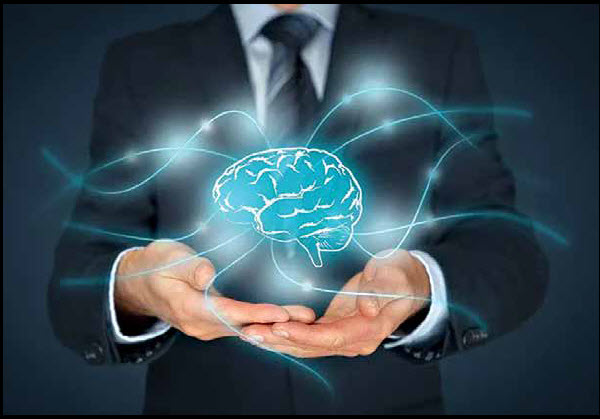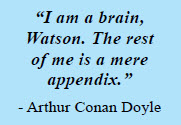Knowing Your Brain
 By: Lisa Philippart
By: Lisa Philippart
June is Alzheimer’s and Brain Awareness Month, which gives me the chance to share with you some interesting information and facts about the remarkable computer in your head, called your brain. Your brain is the three pounds of jelly that is responsible for controlling your thinking, feelings, movement, breathing, digestion, circulation, and more. It’s made up of three major parts that are highly interconnected and dependent on each other. Each part has its own primary set of functions.
The cerebrum takes up 80 percent of your brain and sits up front and center. It consists of four major lobes and is divided into two halves, the right and left hemisphere. The right side of your brain controls motor functions on the left side of your body and vice versa. Areas of the cerebrum communicate to each other through nerve fibers called white matter. The largest white matter tract, or cable system, is called the corpus callosum, which connects the two hemispheres. The cerebrum provides some pretty important functions. Your brain’s cerebrum is what allows us to interpret the sensations of vision, hearing, touch, and smell. It manages our feelings and emotions. Thinking, problem solving, adapting our behaviors, learning, and remembering all take place in the cerebrum. It lets us understand and use language to communicate. Without the cerebrum, we could not perceive the space around us or move our bodies.


The four lobes of the cerebrum are the frontal lobes, the parietal lobes, the temporal lobes, and the occipital lobes. The frontal lobes are the largest and located up front. They are what is often called the “executive” part of the brain, or the brain’s CEO. This is where higher-order thinking takes place, such as reasoning, planning, organizing, and changing our behaviors to fit the environment or situation. The parietal lobes, right behind the frontal lobes, are mainly responsible for recognizing and interpreting sensory data from the outside world. This includes taste, temperature, smell, and touch. They give us understanding of spatial relationships, such as shape, size, and location of objects in relation to our bodies. Most learning of academic skills, such as reading and math, takes place here. The temporal lobes are right above the ears and help us process sound, including music. They are also important for learning, memory, and understanding language. The occipital lobes are located at the back of the brain and help process what you see. There is actually a fifth lobe located deep inside the cerebrum right above the brainstem. It is called the limbic lobe and is actually a system of interconnected parts that include the thalamus, hypothalamus, hippocampus, and amygdala. The thalamus is the central core of the brain receiving all information from the senses, except smell, and then forwarding it on to the other areas of the brain. The hypothalamus (just below the thalamus) regulates sleep, hunger, and body temperature by sending instructions to produce hormones. The hippocampus is critical for learning, especially turning short-term memories into long-term ones. And finally, the amygdala manages our emotions that relate to survival, especially fear for the responses of fight, flight, or freeze.

The cerebellum is tucked away under the cerebrum at the back of your head. It makes up about 11 percent of your brain and is full of neurons. Neurons are brain cells with interconnecting branches that pass along nerve signals. The cerebellum is where learning takes place and the coordination of movement and balance. This area of the brain also fine tunes our thoughts, emotions, touch, and other senses. The amazing function of the cerebellum is the automation of movements, so you can do things like type quickly or learn dance moves.
The brain stem runs from under the cerebrum to the spinal cord. It controls all the body’s automatic functions. The brain stem connects to 11 cranial nerves in the head…every nerve except the one that controls smell. The brain stem is the oldest part of the brain and is essential to maintaining life. It sustains breathing, monitors your heart rate and blood pressure, regulates digestion and body temperature, and manages the reticular activating system (RAS,) which keeps your brain alert.
Now that you know a bit more about your brain, please make an extra effort this month take care of it with proper sleep, diet, and exercise.
By: Lisa Philippart
Licensed Professional Counselor